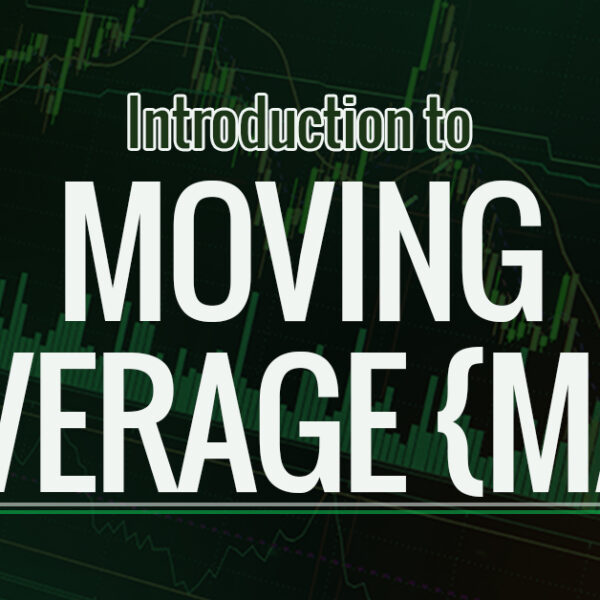Introduction of Moving Average: Computers and information technology allow traders to effortlessly predict price trends with the help of technical indicators, freeing them from the need to do problematic statistical and mathematical estimations. However, we must know that technical indicators are not always predictable; they fail and result in losses.
Nevertheless, traders can be ahead of the game if they pay attention to highly consistent candle models and charts and use more than one indicator to spot suitable entry and exit positions. One such crucial indicator is the Moving Average.
What Is Moving Average?
A Moving Average is a technical signal that market analysts and investors use to decide the trend direction. It sums up the data points of financial security over a particular period and splits the total by the number of data points to attain an average. It is known as a “Moving Average” because it’s constantly re-evaluated based on the current price data.
It is called a lagging indicator as it trails the price movement of the essential asset to produce a signal or display a particular trend direction.
The MA always lags behind price movement; hence they serve to confirm trends once they commence. Comparing MAs of different periods can also show market momentum. For example, an upward trend in a MA might mean an increase in the security price or rate, while a downward trend might indicate a price reduction.
Types Of Moving Averages
There are 3 major MAs: Simple, Linear, and Exponential. The ultimate difference between these 3 depends on how they are calculated.
1. Simple Moving Average (SMA)
The SMA is an easy technical indicator attained by adding the current data points in a particular set and dividing the total by the number of periods.
Traders use the SMA indicator to signal when to enter or quit a trade. SMAs are retrospective because they depend on the previous price statistics for a specific period.
The SMA also helps identify support and resistance prices to determine where to enter or leave a trade.
2. Exponential Moving Average
The EMA gives more weight to the most current price points, making it more open to the latest data points. It is more reactive to recent price movements than a simple moving average, which uses equal weight to all price changes in the specified period.
3. Linear Weighted Moving Average
The Linear Moving Average is quite similar to the EMA. They analyze the last prices with the higher number. Consequently, this Moving Average usually shows price movements and signals faster. So again, these MAs give rapid signals, but be careful, as some may be wrong.
Simply put, a Linear weighted Moving Average is a MA that sets a higher weight on the current price information than the typical SMA.
Moving Average Pros
- Unlike chart pattern analysis or other subjective techniques, MAs create trading signals based on vibrant rules.
- When using MAs to create trading signals, you always trade in the trend direction, not against it.
- MAs remove biased trading decisions, which enhances the trader’s mental state.
- The primary purpose of the Moving Average is to eradicate the market’s short-term changes as MAs show an average closing price over a specific period; hence the Moving Average allows traders to identify the market’s overall trend effortlessly.
- Moving Average is a customizable indicator, meaning the trader can choose the time frame suitable for their trading goals.
- MAs are often used for market entrances and determining prospective support and resistance levels (acts as a resistance level when the price trades below the MA and serves as a support level when the price trades above the MA).
Moving Average Con
- When prices fluctuate, they don’t perform.
- MAs only perform well when the price is trending.
- Depending on MAs alone is risky.
Ways To Use the Moving Average
1. To Determine the Trend Direction
When prices are trending higher, the Moving Average will change by moving higher to represent the increasing prices. This could be called a bullish indicator, where traders may choose buying opportunities.
The reverse would be factual if the price constantly traded below the MA signal, where traders would choose selling opportunities because the market indicated a downward trend.
2. Using MAs as Support and Resistance
Moving Averages are called dynamic support and resistance simply because they tend to change with prices. MAs can be used as support or resistance when a trader looks for a probable market entry or exit.
If the price touches the MA on the price chart, the trader, closely inspecting this chart, will either go into a short or a long position. This works in the same way as parallel support or resistance lines.
For instance, if the current price is above the moving average, the MA will act as support. And if the recent price action is below the moving average, the latter will perform as a resistance.
Conclusion
The Moving Average is a typical trading indicator used by successful traders because of its simplicity and efficiency in determining market trends. Many traders use more than one MA at a time for a more accurate market view.
So, I recommend using the Moving Average in your trading because it is timely and will help you limit emotional impacts while making trading decisions.
Do you find the article helpful? Do not hesitate to let me know in the comment session below.

